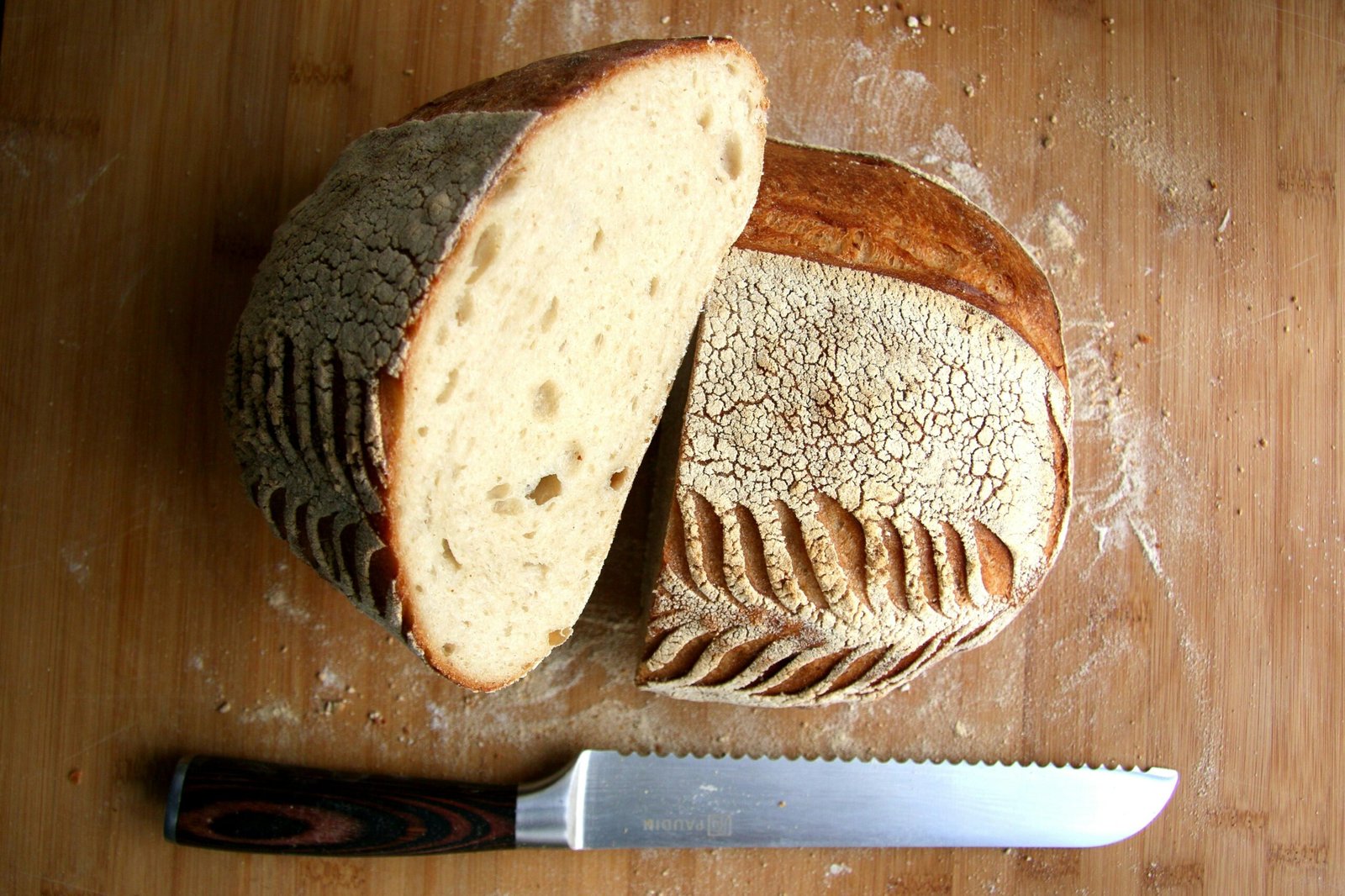Is your Dutch oven helping you achieve that golden, crackly crust every sourdough baker dreams of? The right Dutch oven is more than just cookware—it’s the key to baking bakery-quality bread at home. From heat retention to capacity and safe, durable finishes, choosing the right model makes all the difference.
This guide reviews some of the best Dutch ovens for sourdough bread, compares their pros and cons, and shares practical baking techniques so you can consistently bake loaves that look and taste professional.
Why a Dutch Oven Matters for Sourdough
A Dutch oven creates the perfect environment for sourdough bread because it:
- Traps steam – Essential for oven spring and that crisp, artisan crust.
- Maintains steady heat – Thick walls provide consistent baking from all sides.
- Offers versatility – Beyond bread, it works for soups, stews, and roasts.
Without a Dutch oven, sourdough often lacks volume, texture, or that signature crust.
Best Dutch Ovens for Sourdough Bread
Here are four reliable options that home bakers love, each with unique features to suit different needs:
1. HexClad 5-Quart Hybrid Dutch Oven
- Pros: Patented hexagon nonstick surface, pot oven-safe up to 900°F, excellent heat distribution, dishwasher safe.
- Cons: Premium price point; note: glass lid only safe up to ~400°F.
- Best for: Bakers who want modern nonstick technology combined with serious heat tolerance.
2. Lancaster Cast Iron 5-Quart Dutch Oven
- Pros: Classic cast iron construction, versatile for multiple cooking methods, sturdy build.
- Cons: Heavier than enamel-coated alternatives; requires more care to prevent rust.
- Best for: Bakers who appreciate traditional cast iron quality with long-lasting durability.
3. Finex 5-Quart Cast Iron Dutch Oven
- Pros: Distinctive octagonal shape, polished cast iron surface, innovative spring handles that stay cooler during use.
- Cons: Limited to standard 5-qt capacity; higher price point than similar cast iron brands.
- Best for: Bakers who want artisan craftsmanship and ergonomic design.
4. Xtrema 7.5-Quart Classic Oval Dutch Oven
- Pros: 100% pure ceramic (no metal core), non-toxic coating-free surface, backed by a 10-year warranty.
- Cons: Large size may be too bulky for smaller ovens; takes longer to preheat due to ceramic material.
- Best for: Bakers who want a toxin-free alternative and extra capacity for large loaves or family meals.
Quick Tip: A 5–5.5 qt Dutch oven is ideal for most sourdough loaves, balancing capacity and steam retention. Larger models are best if you bake in bulk.
Dutch Oven Comparison Table
| Model | Size | Pros | Cons | Best For |
| HexClad 5-Quart Hybrid Dutch Oven | 5 qt | Nonstick ceramic surface, oven safe up to 900°F (pot), dishwasher safe, excellent heat distribution | Premium price; glass lid only oven safe to ~400°F | Modern bakers who want advanced design and high heat tolerance |
| Lancaster Cast Iron Dutch Oven | 5 qt | Classic cast iron durability, versatile for multiple cooking styles, long-lasting build | Heavy, requires seasoning & maintenance | Traditionalists who prefer authentic cast iron |
| Finex Cast Iron Dutch Oven | 5 qt | Octagonal shape, spring handles stay cooler, artisan craftsmanship | Smaller capacity, high cost | Bakers who value design and ergonomic features |
| Xtrema Classic Oval Dutch Oven | 7.5 qt | 100% pure ceramic, non-toxic, 10-year warranty, generous capacity | Bulky for smaller ovens, slower preheating | Health-conscious bakers needing larger batch capacity |
Sourdough Baking Techniques Using a Dutch Oven
Once you’ve chosen the right Dutch oven, use these steps to get professional results:
- Preheat thoroughly – Heat your Dutch oven in the oven for 30–45 minutes at 450°F before baking.
- Load dough carefully – Lower dough gently to preserve structure and maximize oven spring.
- Use the lid strategically – Keep the lid on for the first 20–25 minutes to trap steam, then remove it for a crisp crust.
- Experiment with timing – Adjust baking times depending on dough hydration, oven type, and Dutch oven size.
This combination of steam trapping and controlled heat ensures you’ll consistently get a crisp crust and a soft, airy crumb.
Final Thoughts
The best Dutch oven for sourdough bread comes down to balancing durability, heat retention, and steam control. Whether you choose a modern hybrid like HexClad, a traditional cast iron like Lancaster or Finex, or a pure ceramic model like Xtrema, each option can elevate your baking game when paired with the right techniques.
Invest in a Dutch oven that fits your baking style, and you’ll be rewarded with loaves that look and taste like they came straight from an artisan bakery.
Frequently Asked Questions
What size Dutch oven is best for sourdough bread?
A 5–5.5 quart Dutch oven is perfect for a standard loaf. It allows enough room for rise without sacrificing steam retention.
Which is better: cast iron or enameled Dutch ovens?
Enameled Dutch ovens are easier to clean and resist sticking. Bare cast iron offers unmatched heat retention but requires seasoning and more maintenance.
What features matter most for sourdough?
- Tight-fitting lid
- Oven-safe to at least 450°F
- Thick walls for even heating
- Comfortable, heat-safe handles
- Durable build that can withstand frequent use
How long should I preheat my Dutch oven?
Preheat for 30–45 minutes at 450°F. This ensures the pot and lid are evenly heated for consistent baking.
Do I need an expensive Dutch oven?
Not necessarily. Mid-range options ($50–$150) work very well. Premium models may last longer, but they don’t always produce better bread.
How do I maintain my Dutch oven?
- Wash with warm water and avoid harsh detergents.
- Dry thoroughly after each use.
- For enameled versions, avoid metal utensils and sudden temperature changes.
- For cast iron, re-season as needed to maintain its protective layer.




